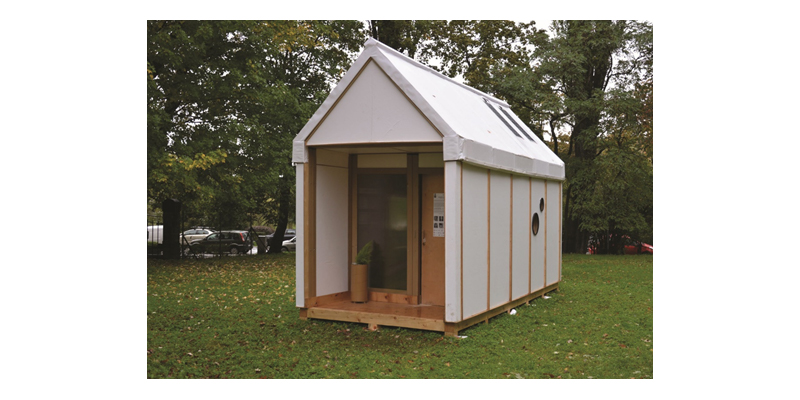Original Proposals and Suggestions for Designers
Downloads
DOI:
https://doi.org/10.7480/jfde.2021.2.5510Keywords:
building envelope, paper in architecture, semi-permanent architectureAbstract
The presented article is a review of building envelope designs where paper-based products are used as the main material. Paper-based products, especially honeycomb panels and corrugated cardboard provide good thermal insulation properties, affordable prices, and relatively low environmental impact. Paper as a building material has been occasionally used in building envelopes in the past several decades, however, no extensive research has been made on this topic. This study aims to organise knowledge about the design of paper envelopes and help designers in making deliberate and environmentally responsive decisions. Seven different envelope designs were described, evaluated, and compared to each other, three of which were designed by the authors of this article. Particular attention was given to their structure, selection of materials, method of protection against external conditions, thermal insulation properties, and resistance to destructive factors. Based on this analysis, tendencies in designing envelopes made of paper-based materials were described and guidelines for designers were formulated. According to the analysed case studies, the most important factors in semi-permanent paper-based envelope design were indicated. These factors include the core with high thermal resistance, durable protective layer combined with additional impregnation or membrane, and paper core ventilation system.
How to Cite
Published
Issue
Section
License
Copyright (c) 2021 Agata Jasiolek, Jerzy Latka, Marcin Brzezicki

This work is licensed under a Creative Commons Attribution 4.0 International License.
Authors or their institutions retain copyright to their publications without restrictions.
